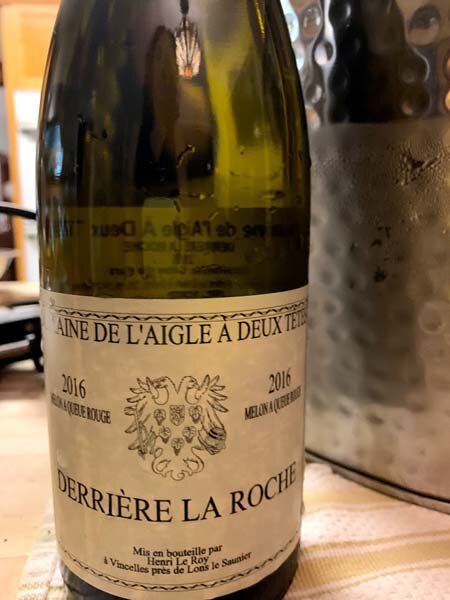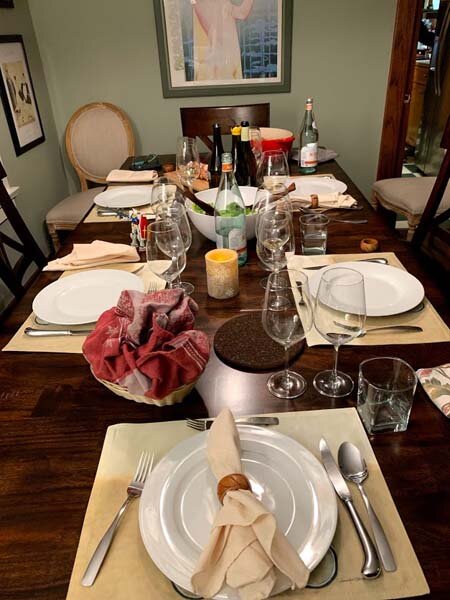A Smorgasbord of Jura
Once you love Jura wines, you never stop. They get under your skin. They are like no other wines made anywhere else. A combination of idiosyncratic grapes and winemaking contribute to the uniqueness: from rich, sexy vin jaune from the Savagnin grape to lithe and spicy Poulsard and Trousseau, not to mention distinctive expressions of Pinot and Chardonnay. Only 50 miles and the Saône River separate it from Burgundy, and its best producers can bring Chardonnay to similarly sublime heights. But isolation via the woodsy Jura Mountains contributes to a certain je ne se quois all its own—sumptuous, nutty whites; meaty, light-bodied reds with grip; and an array of dessert wines—all from mostly native grapes.
Every now and again, Jura gets proclaimed as “the next big thing,”—which, as all these prognostications go, is nuts. It sells this great region and its centuries of winemaking (which dates to the Romans!) short. It’s been a big thing for a long time. It’s just very small (only about 2000 hectares planted to vine/200 producers). A very small big thing.
Keith had us over for a Jura dinner recently, and it was everything a Jura lover could want. Good company. Good food. And, of course: good, good wine.
We started with a red as an aperitif because, in this land, the reds are the lighter choice. We drank a 2014 Pinot Noir/Trousseau blend from one of K&L’s favorite Direct Import Jurans, Domaine de l'Aigle À Deux Têtes. It had savory notes of black tea and spice with a graceful texture. We also opened up several other bottles from this producer, including the delicious 2013 Chardonnay “En Griffez.” Keith expects more from this domaine to be on our shelf in the next few months, so keep an eye out. Also on our table was the excellent 2010 Savagnin from Jean Claude Credoz, an organic/biodynamic producer in the Château Chalon appellation. Savignin is native to Jura and a cousin of Traminer and Gewurztraminer. This wine had lovely green apple notes, fenugreek, allspice, and high acid.
The menu was a symphony of earthy umami with subtle hints of exotic spice that harmonized with the wines. Keith started with a delicate kabocha squash soup made with pistachios, pickled apples, and curry to play on the typical turmeric notes in vin jaune. He slowly stewed chicken in a combination of vin jaune, mushrooms, and creme fraiche as the centerpiece of the meal. It was tender and flavorful, full of a bright lemony note balanced by the rich medley of mushrooms, and we had a crusty baguette to sop up the sauce. Via the sous vide method, he slowly cooked a chicken breast until it was as tender as butter in your mouth. I brought a light, lemony salad for a little balance.
And, finally, we finished with copious Comté, Jura’s deeply flavorful raw milk cheese. Comté has a creamy nuttiness and a pliable texture; on a scale of Brie to Parmesan, it’s more in the realm of Gruyere. And it’s a beautiful paean to Jura terroir: all of the milk for each round must come from within a few miles of any given cheesemaker.
We paired the comté with vin jaune from 2002 by Michel Gahier, neighbor and friend to Jura “godfather” Jacques Puffeney, and the combo was superb. Vin Jaune is a traditional, golden Jura wine that has been aged under a veil of yeast, courting the oxidative nutty flavors much like those in Sherry. One of the interesting topics of the eve was the trend by some Jura winemakers to use the fresher ouille style—topping off the aging wine with fresh wine to protect it from air, as is done with the l'Aigle À Deux Têtes Chardonnay—vs. the traditional sous voile style, which can be used for vin jaune but also any bottling of Chardonnay or Sauvignin. Both styles can make superb wines in this region. With the Comté, however, there’s no question that the vin jaune is where it’s at. The rich texture and ripe, round finish with luxurious hazelnut notes of the Michel Gahier showed just what that veil of yeast could accomplish—it was gangbusters with the cheese! It had been aged in cool cellar instead of attic, as is typical practice, so its oxidative notes were buoyed by very fresh, alive acid. 2002 was a great year for the region and it showed.
Keith is both a masterful cook and host, and I always feel lucky to count myself as a guest. Each dinner party is a food and wine odyssey into a region, and the Jura dinner was a joyous place to be. I learned some, ate lots, and enjoyed myself stupendously.
Thanks Keith!
- Kate Soto














